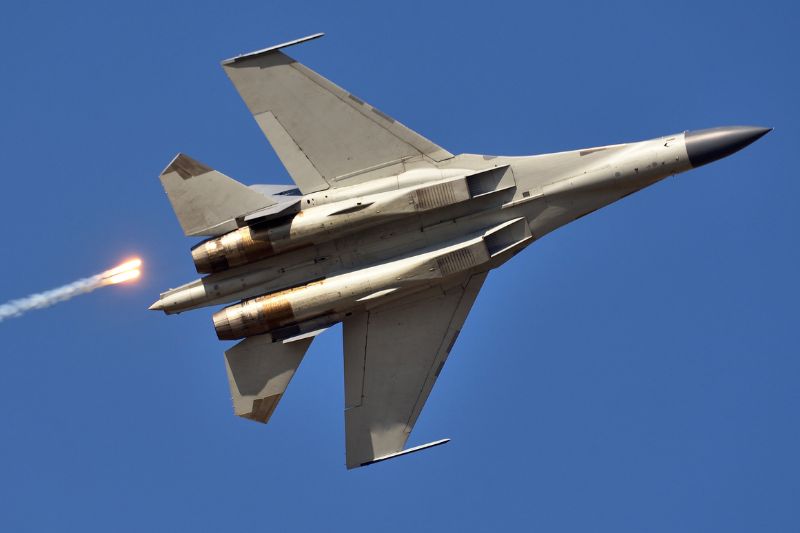The recent mid-air encounter between an Australian naval helicopter and a Chinese fighter plane over the Yellow Sea had the usual reactions. Both governments issued formal statements in entirely expected ways. The Australian defence minister, in referencing the Chinese deployment of flares in the flight path of the Australian Seahawk — on mission to enforce UN sanctions on North Korea — called the action ‘unsafe and completely unacceptable.’ In the words of the Prime Minister, protest was registered with the Chinese government ‘through all of our channels, at all measures at our disposal’. This was not enough for the shadow defence minister, who claimed that the prime minister had been ‘weak in his response … and … he needs to have a man-to-man conversation, set a boundary and draw a line in the sand.’

On the Chinese side, while no admission that flares had been deployed has as yet been made, the foreign ministry spokesperson initially stated that the Chinese pilot had engaged in a ‘professional and safe’ manner and then later that the Australian helicopter had been dispatched numerous times from the naval vessel ‘to conduct close reconnaissance and disrupt China's normal training activities.’ Therefore any unstated act on behalf of the Chinese pilot was clearly ‘legitimate and reasonable.’
Regardless of what occurred, it is obvious that the friendly skies contain a certain amount of turbulence. Even so, howsoever politicians may wish to represent the situation, the Australia-China relationship continues apace. That would not have been expected only a few years ago when Australia was in the deep freeze. It is instructive therefore to consider this mid-flight engagement in the light of some recent history.
It is fairly obvious, when one considers the 75-year history of the Chinese People’s Liberation Army Navy, that this is not a group that is going to sail — or fly — quietly into the good night. Since its beginnings after the Chinese civil war, the PLA Navy has grown into the largest in the world in terms of vessels, although second to the US in terms of overall tonnage, meaning that while China has more vessels they are on the whole smaller than their US counterparts, for now. This rise in scale has also seen a notable rise in attitude, and capability.
One under-commented aspect of the events in the Yellow Sea over the weekend was that at the same time as the Australian vessel HMAS Hobart was on manoeuvres, China was conducting its first sea trial of its 3rd aircraft carrier, the Fujian. This carrier was the first to be wholly designed and built in China; its first carrier, the Liaoning, was a refurbished Soviet/Ukrainian one and was only commissioned by China in 2012. It is not unlikely that were international forces able to observe the tests of the Fujian they would’ve taken it. The 8-day sea trial lasted from May 1 to May 8; the international incident, which China claimed was the result of ‘close reconnaissance’, took place on May 4. Of course, in the absence of classified information, it is pure speculation what exactly took place.
'If ‘politics is the art of the possible’, the government has responded to a dangerous situation with the right balance of outrage, concern and good sense.'
What is certain, however, is that China has form in terms of conducting aggressive passes when it encounters aircraft in territory it considers its own. Most famously there was the disastrous collision in April 2001 between a Chinese J-8 fighter plane and a US intelligence aircraft near Hainan Island that resulted in the death of the Chinese pilot and the forced landing of the US craft. In 2014 a Chinese fighter pilot performed a barrel roll over another US aircraft, again near Hainan, and then in 2023 a Canadian helicopter likewise found itself on the recieving end of Chinese flares over the South China Sea. It is not for nothing that the 2023 Chinese Top Gun equivalent, in English marketed as Born to Fly, actually bears the Chinese title King of the Sky.
What is important to note, then, is that in the face of such Chinese bravado the Australian government was able to express outrage, carry out its naval actions and not have the relationship derailed, as shown by the fact that the Chinese premier Li Qiang is still visiting in June. While the shadow defence minister might wish to grandstand about having man-to-man conversations, most Australian farmers would be happy that, if ‘politics is the art of the possible’, the government has responded to a dangerous situation with the right balance of outrage, concern and good sense. And the helicopter pilot did what they were trained to do and carried on safely, the pride of the fleet.
Dr Jeremy Clarke, PhD is the Director of Sino-Immersions Pty Ltd and runs a wine bar and bookstore in Boorowa, NSW.
Main image: Chinese fighter jet (Getty Images)